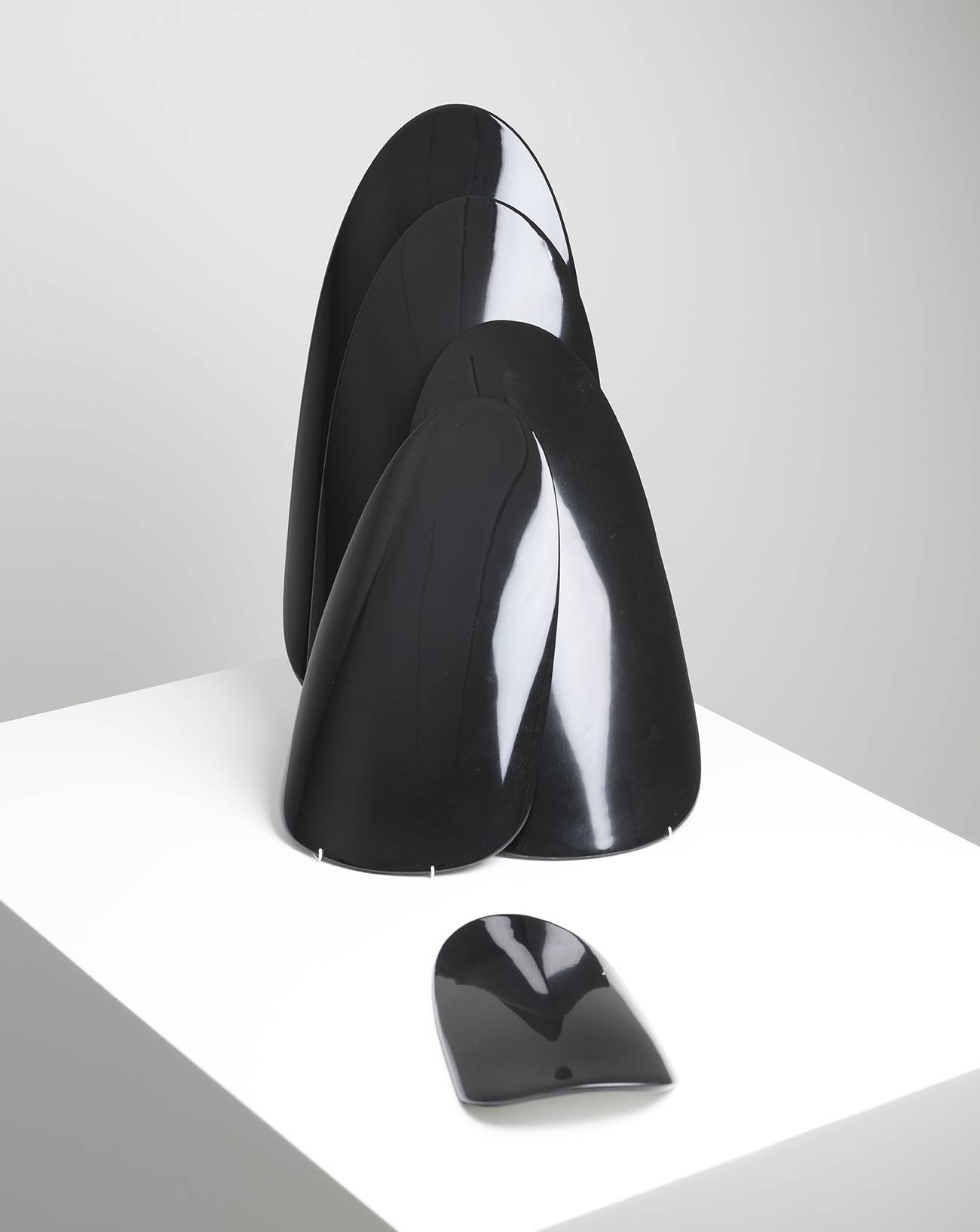Genesis Tramaine: painting as an act of devotion
Genesis Tramaine describes herself as a “devotional painter,” meaning that she paints “as an offering of praise.” It would be putting it mildly to say that this American artist, who celebrated her 40th birthday this year (she was born in Brooklyn in 1983) took the art world by surprise – a world more used to financial incantations than divine ones – when she began showing her portraits of saints in New York’s contemporary art galleries a decade or so ago. “When was the last time you read a press release from a mainstream art gallery which stated that the artist’s prayers provided a spiritual spark that catalysed the creation of the paintings and that those paintings are a visual ‘sermon’ articulating faith, amplifying the relationship with God, and providing a sanctuary for a world in need of healing? The most likely answer would be never,” wrote London’s Church Times back when she first started exhibiting her work.
Nonetheless, this trained mathematician, who used to teach algebra, is not what you’d call a bigot: she self-defines as Christian and queer, and titled her 2018 Richard Beavers Gallery exhibition in New York “God is Trans”. The art market has duly blessed her: in March of this year, her 2019 painting Saint Barnabas went for $214,000 at Christie’s New York and her Mother of Suns of Thunder (also 2019) for $341,000 at Phillips Hong Kong.


Genesis Tramaine, "Feast of The Holy Spouses" (2022) © Genesis Tramaine Courtesy of the Artist and Almine Rech Photo: Dan Bradica.
While in the New Testament God spoke to Joseph through a dream, Genesis Tramaine, who sleeps little, communicates with the divinity through prayer. She wakes up at 5.00 am, gives free rein to her caffeine addiction and prays long hours in total solitude, while Ashley, her wife, continues sleeping peacefully. Tramaine then paints in the wake of this ritual, sometimes for ten hours straight. “I don’t decide when I begin, and I don’t decide when I am done. It’s just one of the most beautiful things. The process is as much of a mystery to me as it would be for you,” she confides.
She began drawing in childhood, during services in church. “When I was in church, sure enough, I was a talker. You know, I would get up and clap and sing at times that maybe weren’t the most appropriate. And I was often instructed to sit on the back pew, [where] I would sketch inside of the hymn books. I would sketch inside of the Bibles, that’s true,” she told the journalist Katie White in 2021. From these beginnings, she has created a remarkable pictorial oeuvre that is assuredly unique, not to mention perfectly homogenous, since it consists entirely in portraits.
“The images of saints that we know and that are projected at us are all white with blond hair – and we all know that that is not true. I think it’s a part of my journey to bridge these gaps.” - Genesis Tramaine
At first glance, one might simply see in these singular pictures – which carry the contrasted traces of colour-field painting (the backgrounds are invariably in bright, flat colour) and graffiti art, and immediately recall Jean-Michel Basquiat and Richard Prince – the expression of a personal pantheon or the evocation of contemporary figures of power. But these portraits do not depict notable everyday people: Tramaine paints portraits of saints whose existence she discovers during prayer, whose lives she afterwards researches, and whose personalities and biographies she then expresses on canvas in her own particular way.
By doing so, she harks back to the methods of Giotto, Fra Angelico, Masaccio, and so many other Renaissance painters who were inspired by the 153 hagiographies in The Golden Legend, Jacobus de Voragine’s 13th-century book, which today provides keys to understanding whole swathes of artistic iconography. Now, like then, Tramaine delves into the saints’ lives and actions and tries to understand their personalities as closely as possible.
“I’ll read something that strikes me. Then I do the research on the word, Bible phrase, story or a specific character. I have to know who their parents and their family are. Then these ‘characters’ come to life. I’m such a Bible nerd,” she told Stephanie Seidel, a curator at Miami’s Institute of Contemporary Art, in 2020. “I think it’s important to give a face to the saints, who have names but don’t have a real persona in the Bible. The images of saints that we know and that are projected at us are all white with blond hair – and we all know that that is not true. I think it’s a part of my journey to bridge these gaps.”
Mike Kelley made no secret of it: in the works of Sister Mary Corita Kent of the order of the Immaculate Heart, in particular her coloured banners, he found an ebullient source of inspiration. Tramaine, for her part, admits to a strong admiration for the work of Gertrude Morgan (1900–80), also known as Sister Gertrude, a self-taught African American artist who, in 1956, received word from the heavens encouraging her to paint, and who subsequently used painting as a way of reaching god. Tramaine’s saints are not just an expression of visual beauty, but vehicles for expressing her faith with as much passion and energy as a gospel song, her ambition being to offer up a visual equivalent.
The edges of her canvases often feature “sermons”: “Cast no stone of judgment”; “Show it with your heart”; “God gave me beauty,” and so on, but it’s not only the edges of her pictures that remind us that there is “spiritual in art, and in painting in particular,” to quote the title of Wassily Kandinsky’s 1911 book, which described making art as the result of an “interior necessity” and declared that spirituality (of whatever kind) was primordial in the creative act.
Tramaine offers ample examples of this, including in the material descriptions of her works: for example, those listed on the label for Jesus Loves Me: Peek (2021) are “acrylic, oil sticks, oil pastels, gouache, acrylic ink, spray paint, Holy Spirit on paper,” while most of the pieces shown in the 2020 exhibition “Parables of Nana” at Almine Rech in London were labelled, “acrylic, oil sticks, spray paint, Yeshua” (Yeshua being the Hebrew name for Jesus).


Genesis Tramaine, "Saint Abigail" (2020) © Genesis Tramaine Courtesy of the Artist and Almine Rech Photo: Hugard & Vanoverschelde Photography.
Contemporary art, it must be said, has managed the feat of extending the palette of possible artistic materials to just about everything today’s world offers, but God as a material is frankly unheard of. And yet, in Tramaine’s case, it is simply the expression of the most genuine honesty, because for her, without faith, there would be no painting. This fact, which may seem fantastic or incredible, is in reality the background to aesthetic proposals that surprise primarily in their strange plastic expression and their technical inventiveness.
I am willing to do what God calls me to, to spread the good news. Whatever God calls me to, I will do my best to answer to. I like being surprised.”
You have to get very close to the canvas to see how the hues are put together, juxtaposed, and superimposed, how the brushstrokes form flat colour, and how the image is built up. Perhaps, indeed, there is something of the divine in there, or in any case something that brings us close to that truth so well expressed by the American artist Trisha Donnelly (how often she is mentioned in this column) that art is a question of faith. Because in this respect, as Jean Marais said in Cocteau’s 1950 film Orphée, “It’s not about understanding, it’s about believing.” Indeed, contemporary art is an edifice that relies entirely on our ability to believe in it, to believe in the artist and what they express, and to let go of reason to abandon ourselves to something else.
Tramaine’s work – an artist whose first name, in retrospect, appears premonitory – is surely a unique case in contemporary art, and talking with her is a source of constant surprise and joy. “There’s no room for ego on the canvas,” she says as though it were obvious, even though her statement contradicts 99% of what is produced today. While she has the future, and perhaps even eternity, ahead of her, she remains modest. “I pray that God enlarges my territory. I am willing to do what God calls me to, to spread the good news. Whatever God calls me to, I will do my best to answer to. I like being surprised.”
“Genesis Tramaine : The Echo of Picasso”, until March 31st, 2024 at the musée Picasso in Malaga and until Decembre 16th, 2024 at Almine Rech gallery, Tribeca, New York.

























